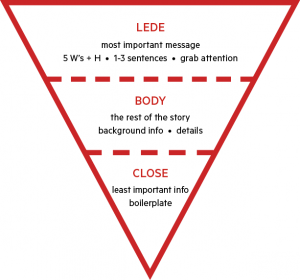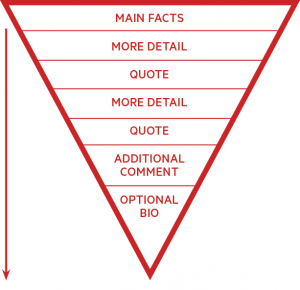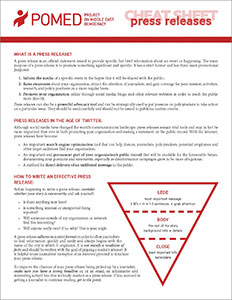For an English PDF of this quick read, click here.
For an Arabic PDF of this quick read, click here.
WHAT IS A PRESS RELEASE?
A press release is an official statement issued to provide specific but brief information about an event or happening. The main purpose of a press release is to promote something significant and specific. It has a strict format and has three main promotional purposes:
- Inform the media of a specific event in the hopes that it will be shared with the public;
- Raise awareness about your organization, attract the attention of journalists, and gain coverage for your mission, activities, research, and policy positions on a more regular basis;
- Promote your organization online through social media, blogs, and other relevant websites in order to reach the public more directly.
Press releases can also be a powerful advocacy tool and can be strategically used to put pressure on policymakers to take action on a particular issue. They should be used carefully and should not be issued to publicize routine events.
PRESS RELEASES IN THE AGE OF TWITTER
Although social media have changed the world’s communications landscape, press releases remain vital tools and may in fact be more important than ever in both promoting your organization and making a statement on the public record. With the Internet, press releases have become:
- An important search engine optimization tool that can help donors, journalists, policymakers, potential employees and other target audiences find your organization;
- An important and permanent part of your organization’s public record that will be available for the foreseeable future, documenting your positions and statements, especially as disinformation campaigns grow to be more ubiquitous;
- A method for direct delivery of an unfiltered message to the public.
HOW TO WRITE AN EFFECTIVE PRESS RELEASE
 Before beginning to write a press release, consider whether your story is newsworthy and ask yourself:
Before beginning to write a press release, consider whether your story is newsworthy and ask yourself:
- Is there anything new here?
- Is something unusual or unexpected being reported?
- Will someone outside of my organization or network find this interesting?
- Will anyone really care? If so, why? This is your angle.
A press release adheres to a strict format in order to allow journalists to find information quickly and easily and always begins with the name of the city in which it originates. It is not merely a rendition of facts and should be written with the goal of piquing a reader’s interest. It is helpful to use journalists’ metaphor of an inverted pyramid to structure your press release.
To improve the chances of your press release being picked up by a journalist, make sure you have a strong headline or, in an email, an informative and interesting subject line that is clearly marked as a press release. If you succeed in getting a journalist to continue reading, get to the point.
The first line of your press release should contain the most important part of your announcement. Like a news story, the first line of a press release should contain a summary of the story and should grab the attention of its reader while answering as much of the following questions as possible:
- Who is making the announcement?
- What is being announced?
- Where is this happening?
- When is the announcement being made? When is an event taking place?
- Why is this happening or why did it happen?

The final question is, of course, the fundamental question and its answer should in turn answer the question of why a reader should care about this announcement or story.
Having answered these questions, your next priority is to provide detail, add contextual information, and highlight why your story is important. Here, you should seek to answer any secondary questions your readers will have, expanding on the information provided in the first paragraph.
Next, you can add quotes to provide insight and opinion. Do not use quotes for the purposes of adding information. Quotes provide you with the opportunity to present your organization, promote your experts, and illustrate your positions, your mission, and your goal.
In subsequent paragraphs you may add detail to explain a quote and include an additional quote to expand on themes presented in earlier sections. These sections should be written with the understanding that a journalist may have to cut your story at any point. This makes it imperative that key information is presented entirely in earlier paragraphs and that you do not rely on later sections of your press release to convey important information. You may conclude your release with an additional comment detailing omitted information or summarizing what you already presented.
Necessarily, a press release is concise and should not exceed one page, or about 400 words. While you should include background information about your organization, this can be added to a section at the end and can spill over into a second page. This, along with other additional information should be labelled clearly as “Notes to Editors”.
WHEN SENDING A PRESS RELEASE
- Include a short outline of your story idea and explain where you think it might fit into the target publication;
- Make an effort to write a personalized email to each major news outlet or journalist;
- Include a copy of your release in the body of your email, as some journalists may not open an attachment;
- Avoid sending photos unless they add something important to a story;
- Aim high, but be realistic and realize that it can take some persistence before you secure coverage.
REFERENCES
https://www.theguardian.com/small-business-network/2014/jul/14/how-to-write-press-release





|
President Trump is Undermining Foreign Aid Transparency and Accountability